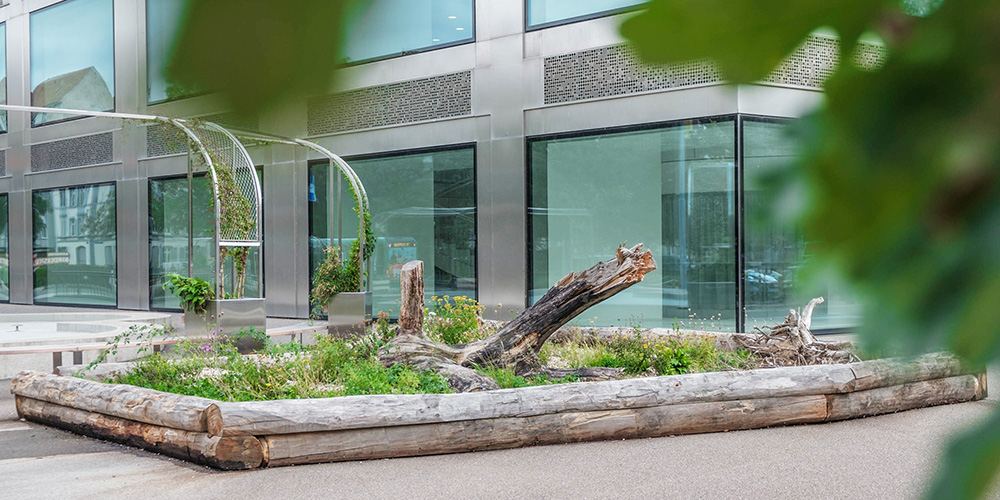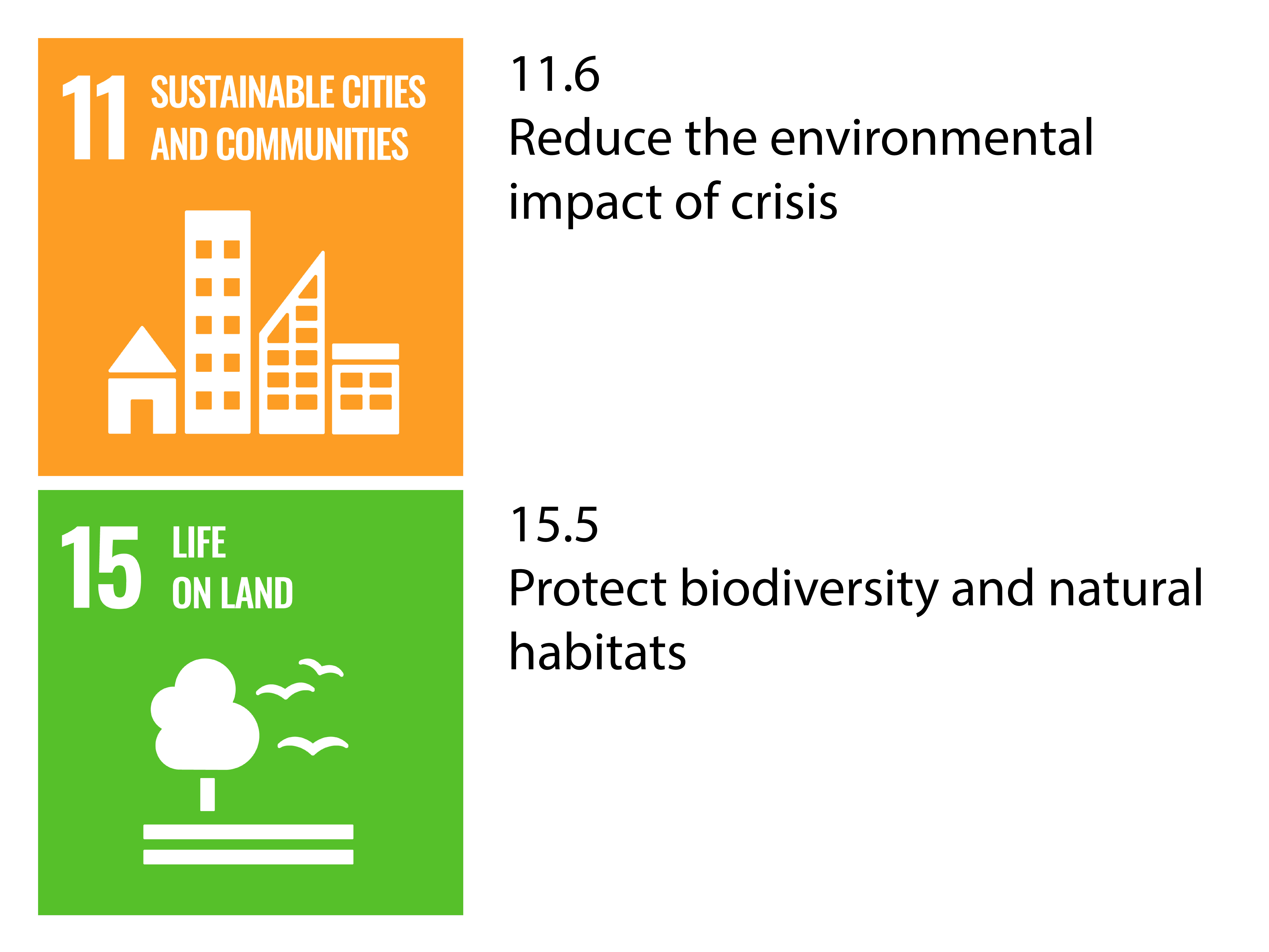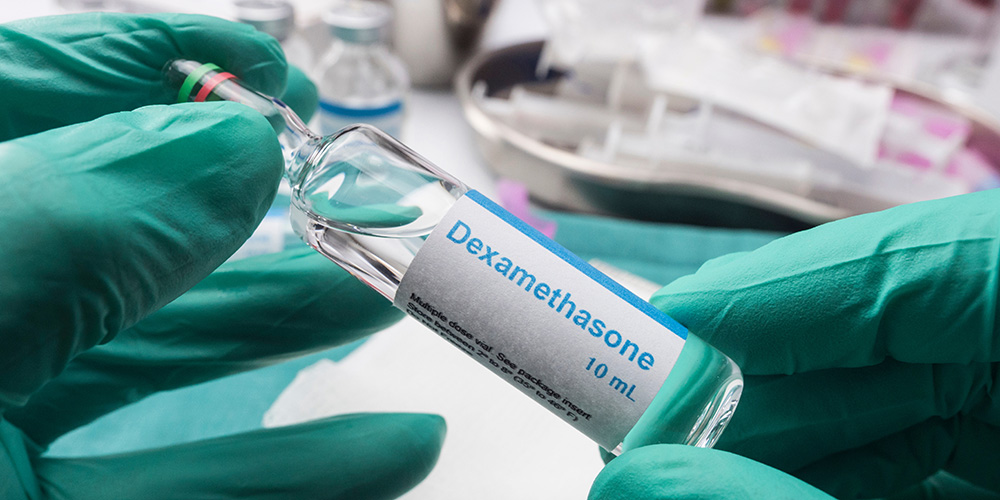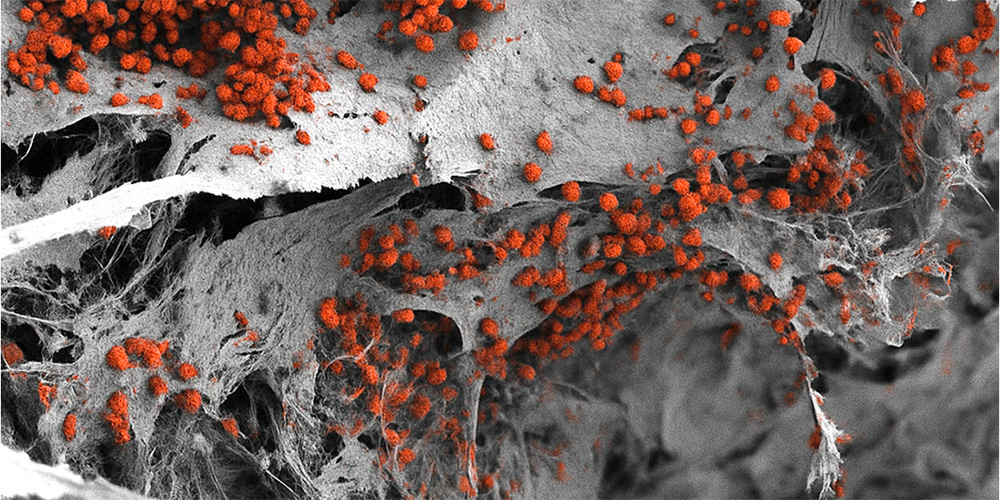Resilient Campus

The University of Basel is actively committed to making its campus more sustainable and resilient. Especially in a densely built-up city like Basel, it is important to maintain or create new green spaces in order to create new habitats for plants and animals and improve the urban climate. In recent years, over 1400 m² of ecologically valuable green roof areas have been created on university-owned and university-used sites. In 2024, these habitats were supplemented by greenery in front of the Biozentrum and the University Library, among others. In addition, infiltration systems were planned for new buildings such as the Department of Biomedicine in order to keep the water in the local water cycle.
Well-being and biodiversity
Greening measures can help to improve the urban climate and mitigate the negative consequences of climate change for living and working on campus. For example, the planting of formerly sealed areas can contribute to local heat reduction.
One example of this is the planters installed in front of the University Library in 2024. THese not only provide shade and cooling for students and staff, but also provide food and shelter for insects and birds. Another example is the new plants that were added in front of the Biozentrum in spring 2024, which contribute to biodiversity. A praying mantis has already been spotted in this newly created habita, for example.
A number of implemented measures are presented in the following picture gallery:
Keep rainwater on site
Rainwater management also plays a role in making the campus more sustainable. In new buildings, such as the Department of Biomedicine's current construction on the Schällemätteli campus, water infiltration systems are used to ensure that rainwater does not simply drain into the sewage system, but instead seeps away on site, remaining in the local water cycle. This benefits the surrounding plant life and relieves the urban sewage system, helping to prevent flooding during heavy rainfall.



